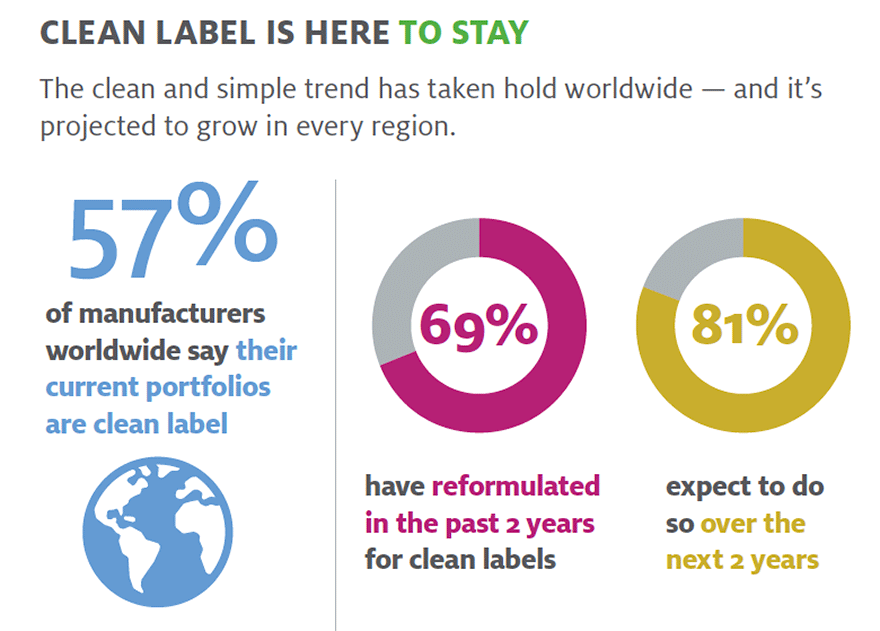
Consumers still struggling with ‘Clean’ label
Stephanie Mattucci, a global food science analyst at Mintel, has grappled with consumer attitudes to the burgeoning trend of ‘clean label’. Clean-related terms such as ‘clean eating’ or ‘clean label’ do not have formal definitions, she says.
It’s generally accepted that clean eating refers to eating whole, natural, unprocessed foods, and avoiding artificial ingredients and highly processed foods. Or in some cases, following diets such as vegan, dairy-free or gluten-free. This aligns with what consumers already consider healthy: natural, freshly made, organic, and preservative-free.
The concept of clean label has been used by the food industry for many years, but clean-related terms have now emerged as part of consumers’ vocabulary as a new way to say ‘healthy’, especially in the US.
However, only 44% of US consumers trust the health claims on food and beverage packages, according to Mintel’s US research on better-for-you food and drink trends.
While the US Food and Drug Administration (FDA) is currently reviewing its definition of healthy and will likely be more inclusive of foods with healthy fats, confusion over dietary advice has created an opportunity for clean-related claims to resonate with a seemingly simple, better-for-you message. Using the word ‘clean’ as a claim is appearing in different ways on pack, such as clean label, clean eating, clean food and clean ingredients.
Products with clean claims are perceived as healthy and natural, but the term ‘clean’ can also be polarising and even confusing. While some consumers said they liked that a product was clean, several asked what clean meant, says Stephanie.
“In order to maintain a clear message, brands can avoid using vague claims and instead focus on the healthy attributes, such as fibre or wholegrain, that consumers are looking for to further encourage them to purchase better-for-you products.”
Read Stephanie’s article here.
Clean and simple
Meanwhile, ingredients company Ingredion says two factors influence the meaning: does a product have fewer, more meaningful ingredients or does it support nutrition expectations (or both)? When it comes to defining clean and simple labels, important product attributes such as “no artificial ingredients” come out on top, although the top three characteristics are ranked close together. As supplied in a survey of manufacturers, these are ‘No artificial ingredients’ (45%), removal of perceived negatives (41%) and ‘Organic’ (40%).
What is known for certain is that consumer demand for clean and simple foods and beverages is driving manufacturers to change how they formulate and package their products. In the same report, 79% of consumers say it is important that they recognise all ingredients listed on their food and drink packaging, 79% say a short and simple ingredient list is important, 67% say on-pack claims relating to “no additives” or “no artificial ingredients” are important, and 61% say specific health claims are important.

From Ingredion’s report
Read more Insights here...